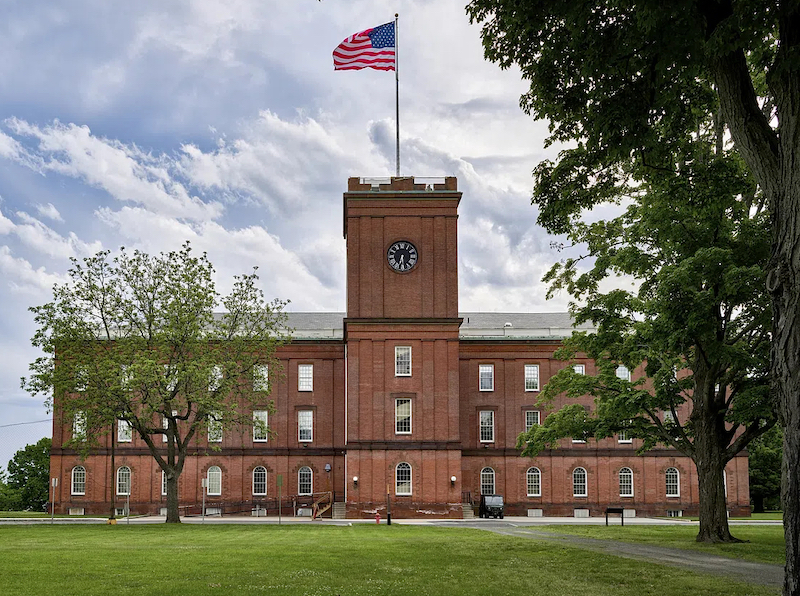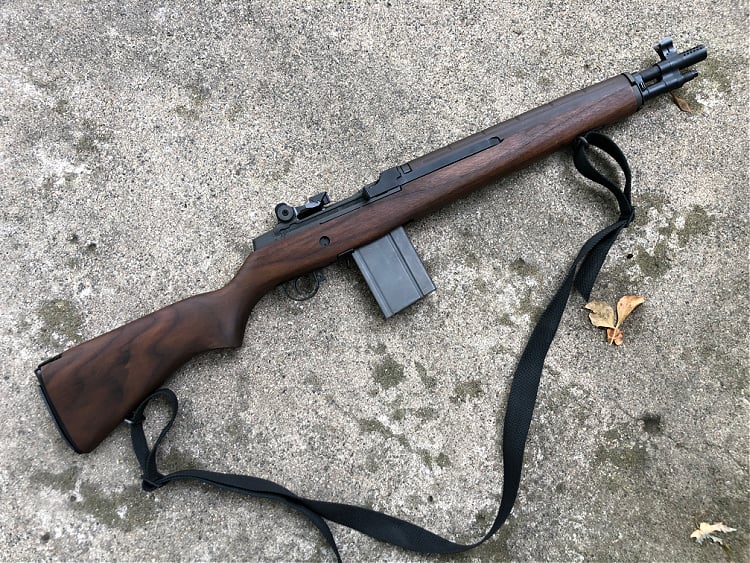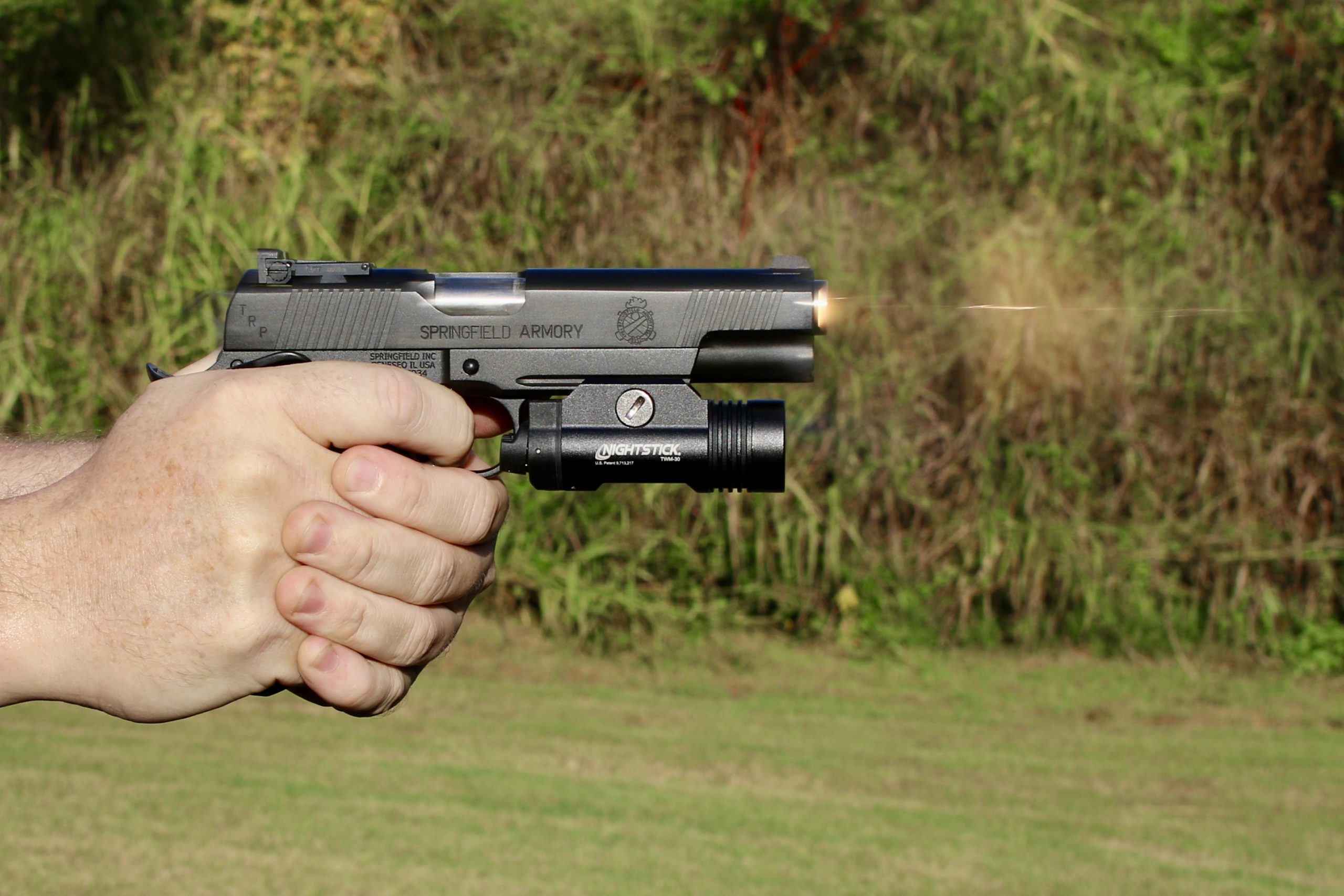Explaining the lineage of American firearms manufacturers can get a bit convoluted. Springfield Armory, though, takes this to a new level of complexity. You’ll understand when we get to the company’s catalog, but first, let’s take a deep dive into the name of the company itself.
For almost 200 years, Springfield Armory was a place — the epicenter of US military small arms production. For the last half a century, there’s been another contender for the name: Springfield Armory — one of the nation’s fastest-growing gun companies.

The Transition
The actual armory, the one in Springfield Massachusetts, made guns for the United States for almost two centuries. It wasn’t until the era of plastics that the old plant was mothballed. If you needed wooden stocks, milled steel, old-school bluing or Parkerizing, the armory in Springfield was optimal. From 1777 up to 1968, this armory kicked out the guns that helped win wars.
Despite the similarity in the name, Springfield Armory, Inc., has no direct affiliation with the old armory. Springfield Armory — the commercial application of the name — began when Elmer Ballance (owner of LH Manufacturing in Texas) built an M14 for the commercial market — a gun he called the M1A.

The Springfield Armory and Springfield Armory, Inc. are two completely different entities. When the new company began making old guns — primarily new versions of the M14 (a big-ass .308 that was fast losing ground to the more nimble 5.56 M16) — the company adopted the name of the old armory as an homage to the American lineage of historical arms.
This was the early 1970s. Ballance sold the company to Bob Reese in 1974. Reese moved production to Illinois. Springfield Armory may be the only gun company of record to leave Texas for such a state — but Reese had his eyes squarely on the past, not the future. And Springfield Armory, the company, made a reputable name for itself producing new versions of military guns. We’ll talk more about their M14 clones, but they also made versions of the Beretta BM59, a FN FAL, a highly sought-after M6 Scout, and even an M1 Garand.
While many of these guns were direct and faithful reproductions of the originals, Springfield has built many more adaptations of some designs — finally settling in on the M1A — their spin on the M14.
Springfield has stayed in the family. Under the leadership of Denny Reese SA has evolved the product line and become a force to contend with for domestic firearms production.
Classic Handguns
There’s nothing more classic and American (at least in the semi-auto pistol space) than the 1911. Springfield kept their roots with this gun, too, producing many versions rooted in the classic M1911A1 style.
They also modernized the designs, winning contracts in the government and LE space with updated versions of these — including the TRP, one I’ve carried for years.

If you are in the entry-level market for a 1911, Springfield is the single best choice for an American-made option. If you want to ramp up with the features, SA has you covered. If you are an aficionado who wants a truly tricked-out 1911 for carry, again: Springfield. And those with the scratch to employ the custom shop keep coming back, too.
In short, Springfield knows wood and steel.
But just when you think this is going to be a comfortable and relatable tale of late-stage American manufacturing success, Springfield had a surprise.
A Big Departure from the 1911
By 2007, Springfield identified an appetite for imported handguns. The exact origins of this business relationship are hard to suss out. There was a design, though, kicking around Croatia — IM Metal’s HS2000. Springfield Armory began importing these guns as the XD (Extreme-Duty). The pistols performed well and were priced well below the other plastic pistols on the market (Glocks, primarily).
The XD, though, is part of what complicates Springfield’s reputation in the industry. Reaction to the platform was decidedly mixed. Many, including me, celebrated the reliability and functionality. Others derided the ergonomics and associated the design with a growing class of guns that didn’t quite measure up to the other, far more expensive, imports.

This changed radically when SA dropped the .45 ACP XD-S. This beast of a single-stack took over the concealed carry market (which had been, up until then, defined by chopped-down versions of wider double-stack duty pistols). The XD-S made big-bore concealed carry pistols a staple for EDC.
But the 9mm was the prize, still. While there was a 9mm XD-S coming, others were jumping into the single-stack market with guns that — arguably — had better ergonomics and brand recognition Springfield couldn’t match. That didn’t stop the XD-S from selling, though, and it is still a gun that just about any manufacturer would like to have in its catalog.
So what was it that held back the XD-M? I’m sure there are theories. Was it Croatia? Did Springfield just not have the customer base for a polymer import? The answer isn’t easy, and it may have been a combination of things. The XD-M proved a steady seller but never caught fire like what we’re about to talk about.
The Hellcat
Despite a big ergonomic update or two to the XD line-up, and the introduction of some kick-ass tricked-out tactical versions, the XD always seemed like a runner-up. The Hellcat, though, launched with vastly improved aesthetics. This little double-stack ramped up Springfield’s concealed carry game.
The Hellcat, in no uncertain terms, made Springfield’s imported polymer pistol line fashionable. While there are still detractors, I find they’re usually wedded to a brand in classic fanboy fashion and will dump on anything not made by [insert Brand X here — Glock, Sig, Bougie clone, even HK occasionally].
I’ve carried a Hellcat since its launch and put it through some punishing drills. Despite the abuse of sweat, dirt, lint, humidity, salt spray and sand, the Hellcat has never hiccupped. It works, carries comfortably, and has a growing stock of aftermarket parts and mags.
Updating the Rifles
After years of wood and steel, Springfield took the M1A in new directions. Longer barrels, bedded stocks, fiberglass, and even plastics are now common to the catalog.
Yet they’d stayed away from the AR-15 platform. Then, in 2015, they dropped the Saint line of rifles. This was a big move and expanded their catalog. Others would follow. The Waypoint proved to be a huge opportunity for the company to get into the hunting market (something they’d flirted with with the 10mm pistols). The Hellion, also from the Croatian counterparts, took them into the bullpup space.
What’s next?
The last epic success for Springfield was the Prodigy. This take on the double-stack 1911 craze brought a more affordable option to those wanting a big 9mm. The guns have been performing and selling well.
If you look at the catalog, there are a couple of holes. Consider Smith & Wesson, or Ruger. If these are competitive peers of SA, then SA needs some wheel guns. It would fit well with the classic feel (single-actions like the 1873, for example). And, it could pave the way for more of a foothold in the other area where SA is thin — rimfires.

Or, as Springfield Armory is known to be a bit inscrutable, maybe they have another surprise in store.


